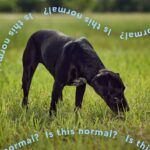How To Spot a Dog Eye Infection—and What To Do if Your Pup Has One

Photo by iStock.com/Dzhulbee
At some point, pet parents are likely to deal with an eye infection. While a dog eye infection doesn’t always indicate something serious is going on, it’s important to always take them seriously. Eye infections can spread to both eyes and potentially lead to blindness in dogs if left untreated. They can also be painful, so if your dog has one, there’s a good chance they’re uncomfortable.
However, spotting an eye infection is usually pretty straightforward. There are some common symptoms to watch for—and if you see them, check in with your vet.
Dog Eye Infection Symptoms
Eye infections are generally bothersome for your dog. Because of this, they’ll give you some fairly obvious signs that something’s awry.
Some common symptoms of a dog eye infection include:
- Squinting
- Excessive blinking
- Redness in or around the eye
- Excess tear production/watery eyes
- Swelling/inflammation
- Closing one eye
- Pawing at the eye
- Eye discharge
- Light sensitivity
Types of Eye Infections in Dogs
While the symptoms are initially similar across the board, there are different types of eye infections.
“Eye infections may involve different parts of the eye and are typically categorized according to what area they are making inflamed,” says Jamie Whittenburg, DVM, veterinarian director at Senior Tail Waggers and director and owner of Kingsgate Animal Hospital in Lubbock, Texas.
Dr. Whittenburg says that conjunctivitis, uveitis, and corneal infections are some of the most common types of eye infections.
Conjunctivitis
Conjunctivitis, or “pink eye,” is inflammation of the transparent membrane (the conjunctiva) that lines the eyelids and edge of the eye, Dr. Whittenburg says.
Conjunctivitis is commonly caused by a viral or bacterial infection; canine herpesvirus and/or Staphylococci bacteria are the usual suspects. But conjunctivitis in dogs can also develop because of allergies, immune-mediated disorders, eyelid abnormalities, trauma, irritation, tear duct, and other eye issues like glaucoma and corneal ulcers.
Uveitis
Uveitis is an infection that results in inflammation of the inside of the eye, Dr. Whittenburg says.
“This is further broken down into anterior and posterior uveitis, depending on which chamber of the eye is affected,” she says.
The uvea includes the iris (the colored portion of the eye); the ciliary body (the part of the eye that makes fluid); and choroid (the middle layer of the eye).
Uveitis can affect one, two, or all three of these structures simultaneously. Like with conjunctivitis, it can be caused by a viral or bacterial infections, but it can also be a result of toxins or irritants, autoimmune disease, trauma to the eye, lens damage, eye tumors, and underlying health issues like high blood pressure or diabetes.
Keratitis
Keratitis is the medical term for inflammation of the cornea, or the surface on the front of the eye.
There are two primary categories: ulcerative and non-ulcerative.
- Ulcerative keratitis involves some type of trauma to the cornea. This could be caused by a cut or scrape.
- Non-ulcerative keratitis is an inflammatory process with several possible causes, including bacterial, fungal or viral infections, irritants, or underlying autoimmune diseases.
Causes of Dog Eye Infections
Dog eye infections can develop for several reasons, the most common being:
- Bacterial, viral and/or fungal infections
- Foreign objects and irritation
- Injury or trauma to the eye
- Ulcers
- Dry eye
- Vitamin deficiencies
- Structural abnormalities (some dogs have genetic or breed-based abnormalities that make them more likely to develop an eye infection.)
Other disorders, such as keratoconjunctivitis sicca or KCS (a form of dry eye), allergies, trauma, blocked tear ducts, misplaced eyelashes, entropion (when the eyelid rolls inward), and foreign bodies can all affect the eye and mimic or cause an infection.
Dog Eye Infection Treatment
The appropriate treatment for your dog’s eye infection will depend both on the cause and the possibility of an underlying problem, Dr. Whittenburg says.
If the infection is localized—e.g., it’s caused by trauma or eye irritation—treatment typically involves eye drops or some type of ointment.
If it’s a systemic issue, like an underlying health problem or abnormalities with your dog’s immune system, treatment will also focus on optimizing your pet’s health.
For example, if your dog has a bacterial infection of their cornea after getting scratched in the eye by a cat, they will need antibiotics for the infection, as well as appropriate treatment if there was damage to the cornea caused by the scratch, Dr. Whittenburg says.
Eye Drops
Medicated eye drops are one of the first lines of defense against an eye infection. These eye drops may have antibiotics and/or other soothing agents in them.
Antibiotics
If your vet determines that a bacterial infection is at play, they’ll likely prescribe antibiotics. This may be in the form of medicated eye drops or oral antibiotics that work systemically to target a more widespread infection.
Anti-Inflammatory Agents
In addition to eye drops, your vet may also prescribe anti-inflammatory agents, like topical steroids, if there is a lot of redness or swelling. These don’t necessarily get rid of the infection, but they can bring swelling down and make your dog more comfortable.
Antihistamines
If your vet suspects allergens are the main cause of your dog’s eye infection, they may prescribe antihistamines. These medications block the effects of histamine, the compound that triggers allergic symptoms. Again, these don’t necessarily treat the infection, but they can help with symptom management to make your dog more comfortable.
How To Prevent Eye Infections in Your Dog
Despite your best efforts, it’s likely your canine will experience dog eye problems at some point. That said, you can help lessen their infection chances.
Wipe Their Eyes After a Walk
Debris can build up on your dog’s face after a walk, especially if you’re walking down a dirt path or hiking in the woods.
Use warm water and a towel to gently wipe your dog’s eyes when you return from your walk.
Recommended Products
Protect Their Eyes in the Car
Your dog may like to hang their head out the window when you’re driving, but this can increase the risk of debris and foreign bodies getting into their eyes and causing irritation.
Leave the window up when you’re driving or protect your dog’s eyes with a pair of dog goggles.
Trim Your Dog's Fur
Trimming the fur around your dog’s eyes can also help minimize the risk of irritation and infection.
Wipe your dog’s eyes, then use a pair of scissors to gently cut back fur that’s close to the eyes.
Always make sure the scissors are pointing away from your dog’s eyeball and get someone to help if you have a squirmy pup.
Recommended Products
Wash Them After a Day in the Water
Thoroughly rinse your dog with clean water after swimming in the pool, lake, or ocean.
Chlorine, sea salt and/or debris can contribute to eye irritation and infection; making sure the eyes are clean after swimming can help mitigate the risk.
Avoid Contact With Contagious Dogs
If you suspect another dog has an eye infection, keep your dog away until it’s cleared up.
To help avoid contagious causes of eye infections, dogs should limit their contact with other dogs.
“Many cases of viral conjunctivitis are acquired at dog parks and daycare facilities where many dogs congregate,” says Dr. Whittenburg.
FAQs About Dog Eye Infections
Is it safe to treat a dog’s eye infection at home?
“No, it is never safe to treat an eye infection without veterinary oversight,” says Dr. Whittenburg.
“An infection is caused by an infectious agent, such as a bacteria, virus, fungus, or parasite, and these must be treated with appropriate medications,” she says. “It’s also important to address the underlying cause of the infection, as left untreated, these eye issues can lead to severe pain, loss of vision, and the loss of the dog’s eye.”
As for Benadryl®? It’s an antihistamine, and while it will not directly treat an eye infection, if allergies are the culprit, it may help manage symptoms.
However, you should always speak with your vet before giving your dog any medications.
Can a dog’s eye infection heal on its own?
“It’s possible a dog may be able to fight an eye infection themselves, however, if left untreated, there is a risk of serious complications, as well as unnecessary pain,” says Dr. Whittenburg.
A dog with a suspected eye infection should be taken to a veterinarian right away, she adds, explaining that “eye disorders are extremely painful and a dog with a visible eye issue is suffering.”
It’s also essential to get a proper diagnosis, “as there are many conditions that can affect the eye that may appear like an infection and be something else entirely,” Dr. Whittenburg says.
How long does it take for an eye infection to go away?
“How long a dog’s eye infection will take to resolve depends on many factors, such as the dog’s age and immune status; the causative agent of the infection; the severity of the infection; and the treatment,” says Dr. Whittenburg.
Most simple eye infections will resolve within about a week with proper treatment, she adds.
Dog eye infections can be a sign of a serious eye condition or develop from something as simple as irritation. Because it’s almost impossible to identify the causes of eye infections without diagnostic tests—and because a canine eye infection can turn serious quickly—visit your vet as soon as you see concerning symptoms.
This content was medically reviewed by a veterinarian.















